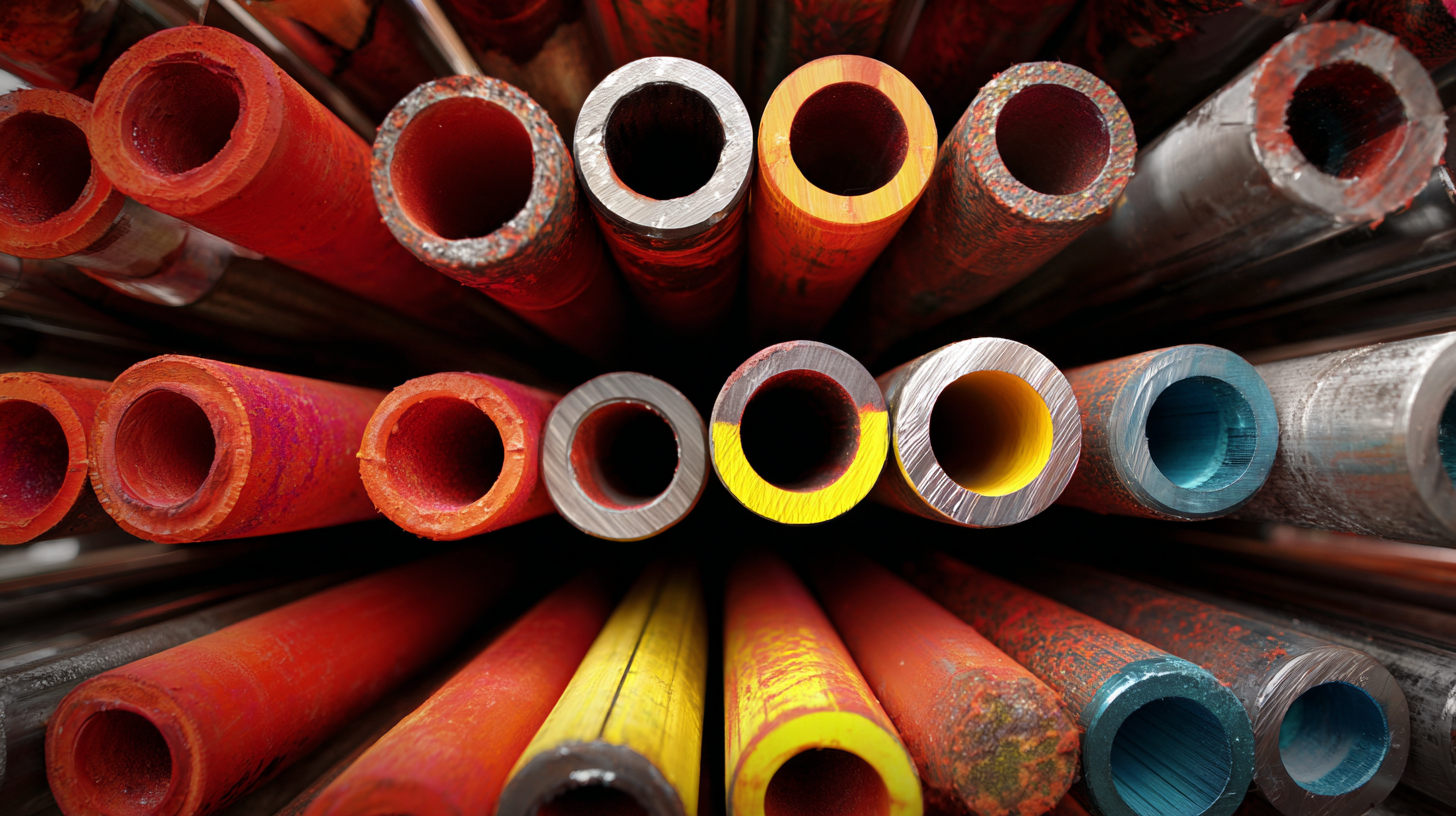Services
10 Essential Tips for Choosing the Best Thermal Intensifier for Your Needs
As the demand for high-performance thermal management solutions continues to rise in various industries, selecting the right Thermal Intensifier has become a crucial decision for many professionals. According to a recent market analysis by Transparency Market Research, the global thermal management market is expected to reach USD 18.58 billion by 2025, driven largely by advancements in electronics, automotive, and aerospace sectors. A Thermal Intensifier not only enhances heat transfer efficiency but also plays a pivotal role in energy conservation and sustainability efforts. With numerous options available, making the right choice can significantly impact operational efficiency and overall performance.

In this blog, we will explore ten essential tips for choosing the best Thermal Intensifier tailored to your specific needs, ensuring that you make an informed decision that aligns with your application requirements.
Understanding the Basics of Thermal Intensifiers and Their Functions
When it comes to optimizing your thermal processes, understanding thermal intensifiers is crucial. These devices enhance the transfer of heat to or from a material, which significantly improves efficiency in various applications, from cooking to industrial manufacturing. Grasping the basics—such as how thermal intensifiers work and the different types available—will help you select the right one for your needs.
 One essential tip is to consider the specific application of the thermal intensifier. For instance, if you’re focusing on culinary uses, look for models designed for uniform heat distribution. In industrial contexts, assess factors such as load capacity and energy efficiency. Another important aspect is the material composition of the intensifier. High-quality materials will not only improve performance but also ensure durability and safety during operation.
One essential tip is to consider the specific application of the thermal intensifier. For instance, if you’re focusing on culinary uses, look for models designed for uniform heat distribution. In industrial contexts, assess factors such as load capacity and energy efficiency. Another important aspect is the material composition of the intensifier. High-quality materials will not only improve performance but also ensure durability and safety during operation.
Additionally, pay attention to the temperature range and control options. A versatile thermal intensifier that offers adjustable settings can provide greater flexibility for various tasks. Taking these considerations into account will help you choose a thermal intensifier that aligns perfectly with your specific requirements.
Key Features to Look for in a Thermal Intensifier
When selecting a thermal intensifier, several key features stand out that can significantly impact performance and usability. First, consider the energy efficiency of the device. An intensifier that boasts high energy savings will not only reduce your operational costs but will also minimize its environmental footprint. Look for products that have received energy efficiency ratings or certifications, as these can offer an assurance of reliability and effectiveness.
Another important feature to examine is the temperature range and control options. Different applications require specific temperature settings, so it's vital to choose an intensifier that can accommodate your needs. Advanced models often come with precise digital controls, allowing users to set and maintain their desired temperatures accurately. Additionally, pay attention to the construction materials, as those that are durable and heat-resistant will ensure longevity and performance stability under intense conditions. By focusing on these characteristics, you can find a thermal intensifier that perfectly fits your operational requirements.
10 Essential Tips for Choosing the Best Thermal Intensifier for Your Needs - Key Features to Look for in a Thermal Intensifier
| Feature | Description | Importance | Recommendation |
|---|---|---|---|
| Heating Capacity | The maximum temperature the intensifier can reach. | High | Choose a model with at least 1500W heating capacity. |
| Temperature Control | How precisely the unit can maintain the desired temperature. | Critical | Look for adjustable settings and digital displays. |
| Safety Features | Includes auto shut-off and heat-resistant materials. | Very High | Prioritize models with advanced safety mechanisms. |
| Size and Portability | The physical dimensions and weight of the intensifier. | Moderate | Consider compact units for easy transport. |
| Heat Distribution | How evenly the device distributes heat. | High | Look for reviews on performance consistency. |
| Energy Efficiency | The amount of power consumed versus output. | High | Opt for Energy Star rated models if possible. |
| Build Quality | Material and durability of the intensifier. | Critical | Select models made from high-grade, heat-resistant materials. |
| User-Friendliness | Ease of operation and accessibility of controls. | Moderate | Choose intuitive designs with clear instructions. |
| Warranty and Support | The manufacturer's warranty and customer service quality. | High | Consider models with at least 1 year of warranty. |
| Price | Overall cost and value for features provided. | Critical | Set a budget and compare similar features for value. |
How to Assess Your Specific Thermal Needs for Optimal Performance
When selecting a thermal intensifier, understanding your specific thermal needs is paramount for achieving optimal performance. Begin by evaluating the primary purpose of the intensifier—whether it’s for industrial applications, research, or energy efficiency. Different environments demand varying levels of thermal output, and knowing the exact requirements helps narrow down your options. For instance, high-precision tasks may necessitate a device with precise temperature control and rapid response times, while other applications might prioritize durability and efficiency over accuracy.
Next, consider the operating environment of the intensifier. Factors such as ambient temperature, humidity levels, and space constraints can significantly influence your choice. High-performance thermal intensifiers can be designed to function effectively in extreme conditions, but they may come at a higher cost. Assess how the intensifier will interact with existing systems and whether it is compatible with current equipment. By weighing these specific needs, you'll be better equipped to select the best thermal intensifier that not only meets your performance criteria but also fits seamlessly into your operational framework.

Comparing Different Brands: Which Thermal Intensifier Fits Your Budget?
When it comes to selecting a thermal intensifier, understanding the various brands available and their offerings can drastically influence your hunting experience. Each brand brings its unique features, price points, and technologies to the table, making it essential to conduct a thorough comparison before making a purchase. The right thermal scope not only enhances visibility in low-light conditions but also improves targeting precision for both AR-15s and bolt guns.
In our recent evaluations of thermal scopes, we've identified a range of options that cater to different **budgets** and **hunting styles**. Whether you prioritize image clarity, battery life, or user interface, there's a thermal intensifier that aligns with your specific needs. Exploring customer reviews and performance ratings can provide invaluable insights into how these products perform in real-world conditions, further assisting you in making an informed choice. No matter your budget, investing time in the right thermal intensifier can elevate your night hunting adventures significantly.
Tips for Maintenance and Upkeep of Your Thermal Intensifier to Ensure Longevity
When it comes to ensuring the longevity of your thermal intensifier, proper maintenance and upkeep are crucial. Regular cleaning is essential to prevent build-up that can impede performance. According to industry reports, routine maintenance can extend the lifespan of thermal intensifiers by up to 30%. Always inspect the unit for signs of wear and tear, and replace parts as needed to avoid more complex repairs down the line.
Another important tip is to monitor the operating conditions closely. Operating outside the recommended temperature or pressure ranges can significantly decrease the efficiency of your thermal intensifier. Utilize temperature and pressure sensors to maintain optimal performance levels, as studies have shown that units operated under controlled conditions can perform up to 15% more efficiently.
Finally, consider training your team on best practices for thermal intensifier operation and maintenance. Proper training ensures that all users understand how to handle the equipment efficiently, leading to reduced downtime and increased overall productivity. With the right approach, the performance and reliability of your thermal intensifier can be greatly enhanced, ensuring it meets your operational needs effectively.
Thermal Intensifier Efficiency Comparison
This chart compares the efficiency ratings of various thermal intensifiers based on their energy consumption and output temperature. Higher efficiency ensures better performance and energy savings.
